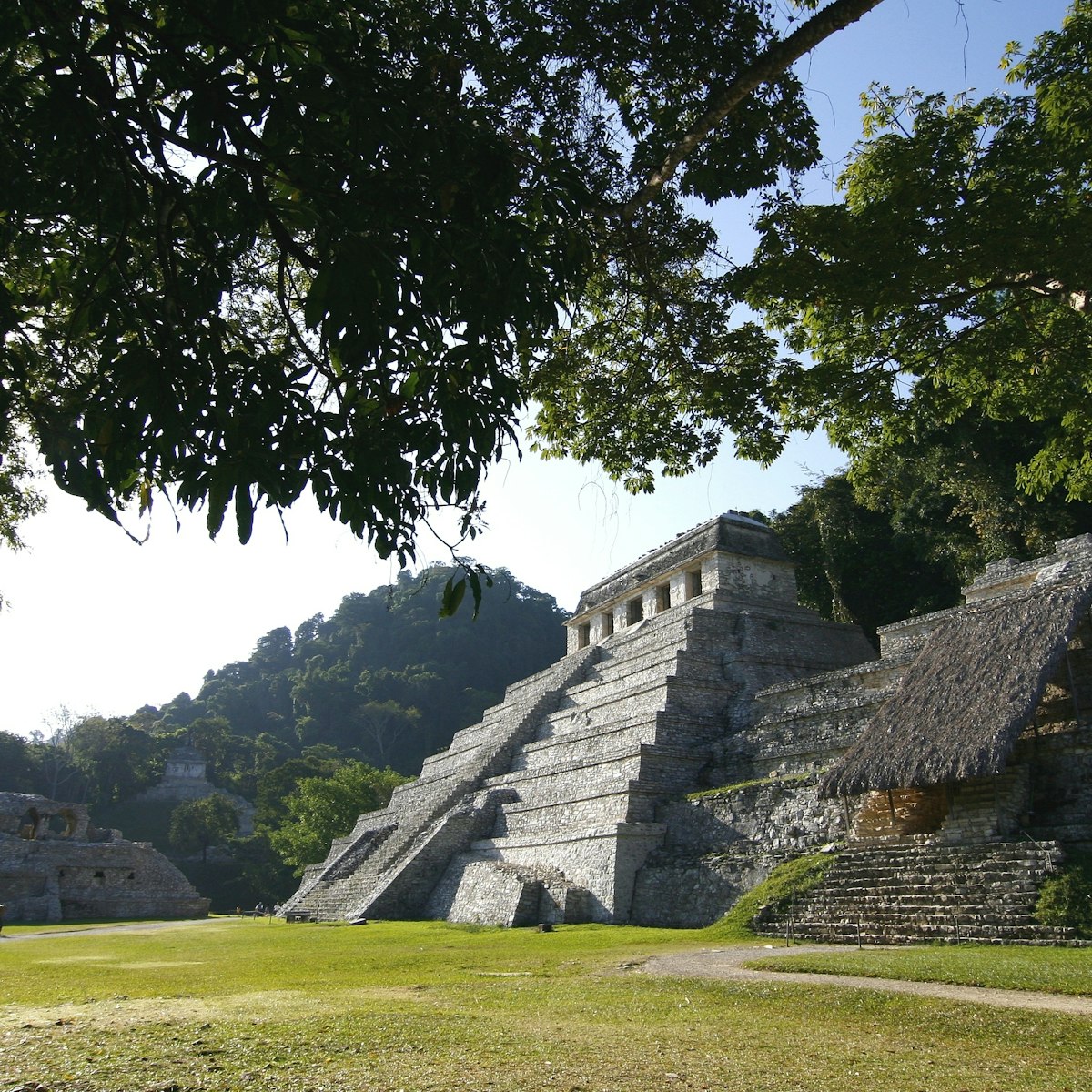As you walk in from the entrance the vegetation suddenly peels away to reveal many of Palenque’s most magnificent buildings in one sublime vista. A line of temples rises in front of the jungle on your right, culminating in the Templo de las Inscripciones about 100m ahead; El Palacio, with its trademark tower, stands to the left of the Templo de las Inscripciones; and the Grupo de las Cruces rises in the distance beneath a thick jungle backdrop.
The first temple on your right is Templo XII, called the Templo de la Calavera for the relief sculpture of a rabbit or deer skull at the foot of one of its pillars. The second temple has little interest. Third is Templo XIII, containing a tomb of a female dignitary, whose remains were found colored red (as a result of treatment with cinnabar) when unearthed in 1994. You can look into the Tumba de la Reina Roja (Tomb of the Red Queen) and see her sarcophagus. With the skeleton were found a malachite mask and about 1000 pieces of jade. Based on DNA tests and resemblances to Pakal’s tomb next door, the theory is that the ‘queen’ buried here was his wife Tz'ak-b'u Ajaw. The tomb of Alberto Ruz Lhuillier, who discovered Pakal’s tomb in 1952, lies under the trees in front of Templo XIII.
The Templo de las Inscripciones, perhaps the most celebrated burial monument in the Americas, is the tallest and most stately of Palenque’s buildings. Constructed on eight levels, the Templo de las Inscripciones has a central front staircase rising 25m to a series of small rooms. The tall roofcomb that once crowned it is long gone, but between the front doorways are stucco panels with reliefs of noble figures. On the interior rear wall are three panels with the long Maya inscription, recounting the history of Palenque and this building, for which Mexican archaeologist Alberto Ruz Lhuillier named the temple. From the top, interior stairs lead down into the tomb of Pakal (now closed to visitors indefinitely to avoid further damage to its murals from the humidity inevitably exuded by visitors). Pakal’s jewel-bedecked skeleton and jade mosaic death mask were removed from the tomb to Mexico City, and the tomb was re-created in the Museo Nacional de Antropología. The priceless death mask was stolen in an elaborate heist in 1985 (though recovered a few years afterward), but the carved stone sarcophagus lid remains in the closed tomb – you can see a replica in the site museum.




